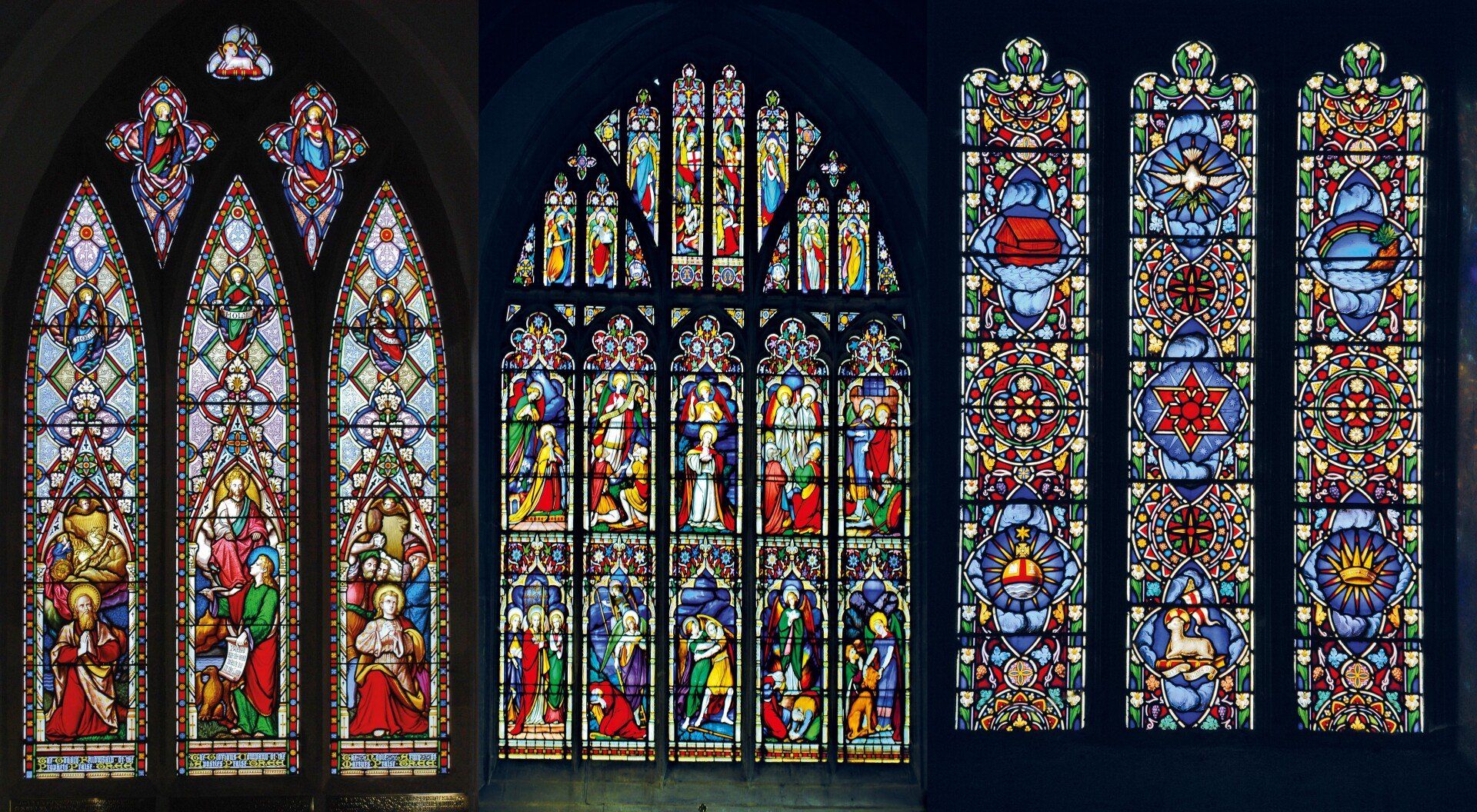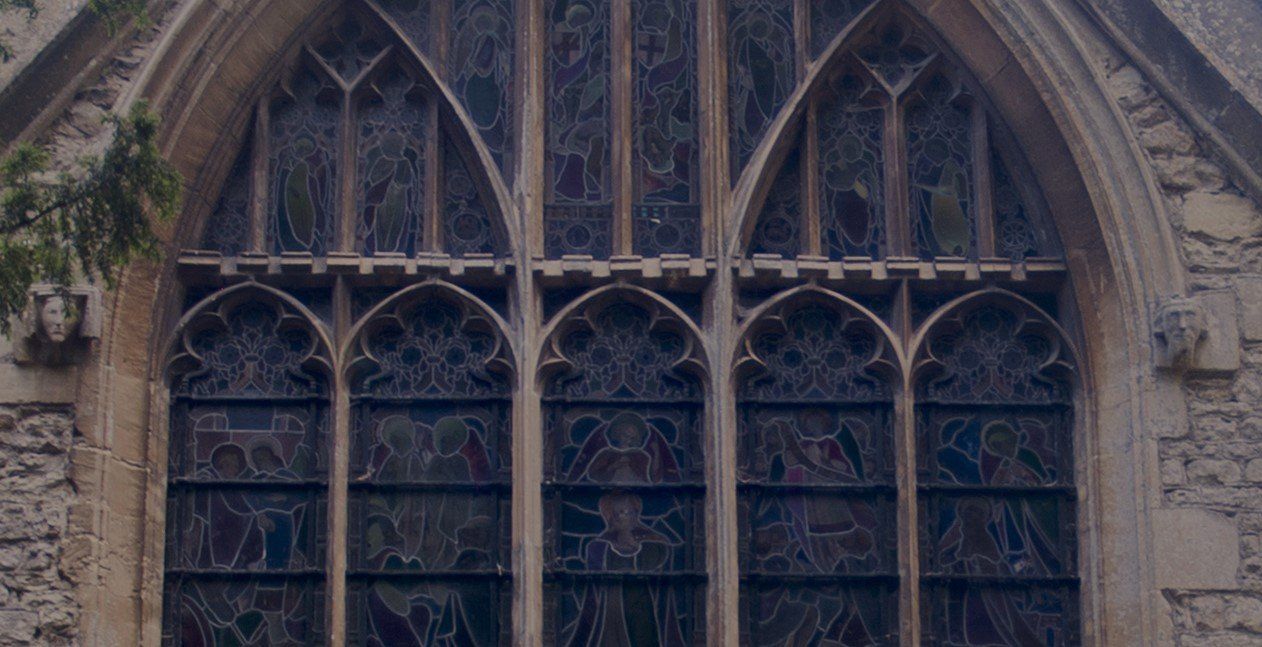Church stained glass windows
A comparison between the small windows of many of the oldest houses in Steventon and the large apertures of the church is striking, yet they are contemporary in age.
The windows of St Michael’s shout loud and clear about the importance of this building in the medieval period. They tell of skilled craftsmanship, financial investment, patronage and sponsorship, and of the dominating role religion played in the hearts and minds of the villagers, and those who had authority over them.. Typical of the Geometric style is a late 13th century window in the north wall of the chancel. Next came the 14th century windows, constructed in the Decorated style, and found in the south wall to the right of the tower; in the belfry of the tower, and in the north wall of the nave. The final phase came in the 15th century, according to the Victoria County History with the west and particularly beautiful east windows, both in the Perpendicular style. It might be hoped that the stained glass in the east and west windows would add something to understanding of the medieval church, but this is not the case: both sets of glass date from the 19th century.
Medieval glass
However, there is some stained glass that has survived from the medieval period, which has much to say about St Michael’s, but it won’t be found in the present building: bizarrely it can be found in the windows of Milton Manor, two miles away.
Sir Hugh de Calveley
It seems what happened is this: when in 1378, Sir Hugh de Calveley acquired the lordship of the manor, he undertook an extensive reordering of the church, details of which can be found on another display board. To make his mark, he ensured that his family heraldic arms were incorporated into the glass of the 14th century windows. We know this because a visitor to the church in 1665, Mr Elias Ashmole, made a note of the existence of Sir Hugh’s arms in one or two of the windows. Then, in 1772, the vicar of St Michael’s, Reverend Ralph Heath sold six panels of 14th century stained glass to Bryant Barrett of Milton Manor for the sum of seven guineas (worth over a thousand pounds today). It seems Sir Hugh’s attempt to be commemorated as the sponsor of the reordered church were confounded, and his coat of arms was carted off down The Causeway to the next village.
Milton Manor
The six panels were set into the windows of the private chapel at Milton Manor, where they exist today, although Sir Hugh’s coat of arms was not put together into its original form, but was incorporated piecemeal into the borders of the reconstituted panels.

East window moulding
Another little clue to the history of the medieval church can be found in the east window. The hood moulding - an external moulded projection from the wall over the arch to throw off rainwater and a sure sign that a window was designed to be glazed – ends with the head of a king on the north side and the head of a queen on the south. This window, is in the Perpendicular style and would have required much expense and expertise to install. If the Victoria County History is correct in its dating, It seems certain that its construction and design took place under the auspices of Westminster Abbey, which acquired the lordship of the manor in 1399. Who then, were the king and queen and why were their heads engraved upon one of the most noble features of St Michael’s church?
